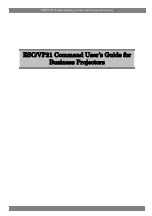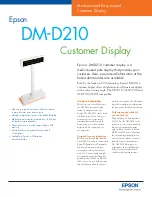
15 Basics
15.3.2
The modulation system
As with the previous FSK standard, PT-II also uses two tones (or carriers). These are,
however, not just sent alternately to transmit the data, they are both sent together as
continuous tones. The data is contained in the phase of each tone, or, to be more exact, in
the phase difference between two consecutive information states or steps. The keyword
step
should be more exactly explained, so that an essential part of the PT-II modulation
system, the pulse shaping, can be understood. The FSK system uses rectangular keying
(or steps) throughout. With 100 Baud operation for example, a high (mark) tone of
exactly 10 ms is transmitted if a logical 1 is sent, or a 10 ms low (space) tone if logic 0.
Every step at 100 baud takes exactly 10 ms and starts and stops very abruptly, i.e. a
square wave. This abrupt keying produces a relatively wide frequency spectrum. That the
two tone FSK keying bandwidth remains tolerable is only due to the fact that no phase
shift takes place during the tone keying (providing a correctly adjusted modulator may
achieve this). Phase modulation on the other hand, has, by its very nature, a phase jump
between each step. A square wave modulated PSK signal has therefore a very wide
frequency spectrum, and should never be used on the (in any case much too narrow) HF
amateur bands. The number of steps (or changes) per second is called the
symbol rate
, or
(a little less correctly) baud rate.
Harry Nyquist, one of the most well known of the earlier communications experimenters,
developed, as early as the twenties, a mathematical model that described exactly the
relationship between bandwidth and the maximum step speed, which finally led to his
sampling theory. Stemming from his work, a special step or impulse waveform was found
that contained the ideal characteristics for data transmission over an electrical circuit.
A special version of this waveform, with even better characteristics, led to the so-called
"raised-cosine" waveform. (For insiders: the form of the spectrum is equal to the squared
cosine function, or the cosine function plus one.) The special properties of the "raised
cosine pulse" are as follows:
1.
The spectral bandwidth of a carrier modulated with the RC pulse is ideally only
double the symbol rate (in hertz) - without any spillover or nearby spurious responses.
In practice it is possible to reach a spurious attenuation of around -50 dB.
2.
At the sampling points (e.g. every 10 ms for a step speed of 100/sec) the RC pulse
presents a "zero crossing" to all except the
correct
sample point. This means that the
impulse can be completely overlapped at the sampling distance, although the pulse
itself may exhibit a multiple of the computed step length. This leads to a very high
information density. To clarify this point, Fig. 3.1 shows the sampling points of a 100
baud RC pulse.
3.
Even the complete signal, comprising numerous overlapping RC pulses, always
shows a "zero crossing" between the sampling points. This "zero crossing" enables
any timing errors to be measured, and thus the PT-II system to be kept in
synchronization.
It is obvious to use two RC modulated signals, with a spacing of 200 Hz (
Shift
) in
parallel. The complete signal then shows a spectrum 450 Hz wide at minus 50 dB.
PACTOR-II utilizes exactly this modulation scheme, using two tones, and a modulation
rate of 100/sec. This is a relatively low value, and is a good compromise between
robustness in noise, and resistance to multipath effects. As the two tones work in parallel,
173
Summary of Contents for PTC-IIex
Page 14: ...List of Figures and Tables XII...
Page 30: ...3 Installation 16...
Page 108: ...7 Audio 94...
Page 126: ...8 FAX 112...
Page 173: ...12 SYStest 159...
Page 183: ...14 Circuit Description 169...
Page 195: ...15 Basics 181...
Page 201: ...B Technical Data 187...
Page 202: ...C Layout Appendix C 19 Layout B 1 Motherboard Figure B 1 Motherboard 188...
Page 203: ...C Layout 189...
Page 215: ...Index 202...
















































